Do you have a question about the Samsung IAC Series and is the answer not in the manual?
Essential safety guidelines for personal and property safety.
Procedures and precautions for installing the product.
How to connect the power cable to the product.
Overview of the player functionality and features.
Settings related to picture quality adjustment.
Configuration and management of network connections.
System settings and configuration options.
General specifications of the product.
Explanation of warning and caution symbols used in the manual.
Warnings about electrical hazards and precautions.
Critical warnings regarding power cord, sockets, and handling.
Precautions for disconnecting power and using approved cords.
Critical warnings about product placement, ventilation, and children's safety.
Precautions for placing the product, avoiding damage, and ensuring stability.
Critical warnings about high voltage, disassembly, and heavy objects.
Precautions for handling liquids, electrical surges, and impacts.
Precautions for screen handling, distance, and avoiding moisture.
List and brief description of included accessories.
Information about the product's remote control.
Description of ports for specific models.
Description of ports for the IAB 110 2K model.
How to turn the product on/off and adjust volume.
Switching input sources and navigating menus.
Accessing MagicInfo via a shortcut button.
Using the TOOLS button for quick access to functions.
Buttons for input selection and menu control.
Instructions for inserting batteries into the remote.
Warnings against shocks, vibrations, and dropping the product.
Precautions to avoid LED damage and protect product corners.
Advice to use anti-static gloves when handling the product.
Recommends professional installation services for safety.
Guidance on using the provided frame kit for installation.
Order of connecting cables and essential safety steps.
Option to choose internal or external memory for content playback.
Playing content from a server or internal memory.
How to select and view content files.
Functions of remote control buttons during playback.
Settings accessible via the TOOLS button during playback.
Supported file systems and limitations on file resolution.
Information on supported video/audio codecs and file versions.
Limitations on simultaneous playback and sound output priority.
Lists file formats and their containers with codec details.
Details on supported video/audio codecs, resolution, frame rate, and bit rate.
General restrictions, video/audio decoder support, and codec details.
Supported image file formats and maximum resolutions.
Supported PowerPoint file formats and unsupported features.
Supported PDF file format and unsupported features.
Supported Word file formats and unsupported features.
Checking schedules imported from storage devices.
Managing content playback schedules.
Setting a 6-digit PIN for accessing Custom Home.
Selecting and running items within Custom Home mode.
Exporting product settings to external storage devices.
Procedures for managing settings when duplicate files are found.
Setting a unique ID for each product.
Selecting cable types for connecting the display to a PC.
Arranging multiple displays into a video wall configuration.
Conditions required for Frame Lock operation in Video Wall.
Splitting videowall display based on matrix configuration.
Rearranging split screens using matrix numbers within the feature.
Choosing image display format (Full, Natural) for videowalls.
Verifying current network and internet connectivity status.
Selecting picture modes for optimal quality based on environment.
Listing available picture mode options.
Setting the product to turn on automatically at a specified time.
Configuring timer setup options like time, source, and content.
Setting the product to turn off automatically at a specified time.
Managing holidays to disable timers automatically.
Enabling or disabling the ticker function for text overlays.
Entering messages, setting display times, fonts, and positions.
Configuring scroll effects and previewing ticker settings.
Selecting picture modes for optimal viewing.
Adjusting LED brightness, contrast, sharpness, and color temperature.
Adjusting picture enhancers, color, tint, and white balance.
Adjusting gamma, contrast, black tone, and flesh tone.
Refining color spectrum and expanding HDMI input signal range.
Configuring HDR effects, tone mapping, and peaking.
Selecting color tone and reducing picture noise.
Adjusting HDMI black level, film mode, and auto motion plus.
Applying picture settings to external devices or current source.
Choosing picture size, aspect ratio, and adjusting position.
Restoring all picture settings to factory defaults.
Activating screensavers and configuring message display options.
Setting menu language and resetting display settings.
Selecting sound modes and adjusting speaker volume balance.
Customizing sound with equalizer and selecting digital audio output format.
Providing a realistic surround sound experience with Dolby Atmos.
Choosing audio output speakers (internal or external).
Auto volume adjustment and resetting sound settings.
Checking network status and selecting network connection type.
Configuring network settings to connect to available networks.
Ways to connect the product to a LAN via cable.
Understanding DHCP for dynamic networks versus static IP requirements.
Connecting to the network using a LAN cable.
Steps for automatic network setup.
Manual configuration for static IP addresses.
Steps for connecting to a wireless network.
Supported security protocols and connecting via WPS.
Understanding wireless network security keys.
Manual configuration for static IP addresses in wireless networks.
Steps for manual wireless network setup.
Steps for setting up a network using the WPS button or PIN.
Activating WPS on the wireless router within a specified time.
Establishing a connection to the MagicINFO server.
Selecting MagicInfo mode and managing server access.
Enabling embedded server and Wi-Fi settings.
Accessibility options and rerunning initial setup.
Configuring clock, date, time, NTP, and DST settings.
Adjusting power-on delay to prevent overload.
Automatically switching input sources when disconnected.
Managing auto power on, power saving, and standby.
Brightness optimization, no signal power off, and auto power off.
Setting up and configuring keyboards and mice.
Managing device connections and content sharing.
Selecting playback modes for different environments.
Changing the 6-digit personal identification number.
Restricting remote/product button operations.
Locking USB ports and restricting mobile connections.
Allowing/denying network access and securing protocols.
Managing network/USB locks and installed certificates.
Controlling connected Samsung devices with the remote using HDMI-CEC.
Solutions for when Anynet+ is not functioning correctly.
Troubleshooting device connection and playback problems.
Activating HDMI hot plug and setting custom startup logos.
Restrictions on custom logo file types, sizes, and naming conventions.
Special display modes for simulation and movie intent.
Resetting system settings and clearing storage.
Upgrading product software to the latest version.
Updating software using USB devices or network connections.
Accessing Samsung contact details and product information.
Optimizing device condition and resetting all system settings.
Identifies model name, cabinet, and LED configuration.
Details power supply requirements and operating/storage environmental conditions.
Compatibility with Plug-and-Play systems for automatic installation.
Instructions for accessing energy labeling information for Europe and Turkey.
Definitions and measurements of horizontal and vertical frequencies.
Recommends optimal resolution and describes automatic signal mode adjustments.
Table of horizontal and vertical frequencies for various resolutions.
Data on pixel clock, sync polarity, and HDMI/DP compatibility.
Table of horizontal and vertical frequencies for various resolutions.
Data on pixel clock, sync polarity, and HDMI/DP compatibility.
Resolution and timing data for IAB 110 2K, IAB 146 2K, IAC 130 2K models.
HDMI and DP port compatibility for specific models.
Table of horizontal and vertical frequencies for various resolutions.
Data on pixel clock, sync polarity, and HDMI/DP compatibility.
Situations where service fees may be charged, even under warranty.
Cases not considered product defects and damage from customer fault.
Notice regarding open source licenses used in the product.
Essential safety guidelines for personal and property safety.
Procedures and precautions for installing the product.
How to connect the power cable to the product.
Overview of the player functionality and features.
Settings related to picture quality adjustment.
Configuration and management of network connections.
System settings and configuration options.
General specifications of the product.
Explanation of warning and caution symbols used in the manual.
Warnings about electrical hazards and precautions.
Critical warnings regarding power cord, sockets, and handling.
Precautions for disconnecting power and using approved cords.
Critical warnings about product placement, ventilation, and children's safety.
Precautions for placing the product, avoiding damage, and ensuring stability.
Critical warnings about high voltage, disassembly, and heavy objects.
Precautions for handling liquids, electrical surges, and impacts.
Precautions for screen handling, distance, and avoiding moisture.
List and brief description of included accessories.
Information about the product's remote control.
Description of ports for specific models.
Description of ports for the IAB 110 2K model.
How to turn the product on/off and adjust volume.
Switching input sources and navigating menus.
Accessing MagicInfo via a shortcut button.
Using the TOOLS button for quick access to functions.
Buttons for input selection and menu control.
Instructions for inserting batteries into the remote.
Warnings against shocks, vibrations, and dropping the product.
Precautions to avoid LED damage and protect product corners.
Advice to use anti-static gloves when handling the product.
Recommends professional installation services for safety.
Guidance on using the provided frame kit for installation.
Order of connecting cables and essential safety steps.
Option to choose internal or external memory for content playback.
Playing content from a server or internal memory.
How to select and view content files.
Functions of remote control buttons during playback.
Settings accessible via the TOOLS button during playback.
Supported file systems and limitations on file resolution.
Information on supported video/audio codecs and file versions.
Limitations on simultaneous playback and sound output priority.
Lists file formats and their containers with codec details.
Details on supported video/audio codecs, resolution, frame rate, and bit rate.
General restrictions, video/audio decoder support, and codec details.
Supported image file formats and maximum resolutions.
Supported PowerPoint file formats and unsupported features.
Supported PDF file format and unsupported features.
Supported Word file formats and unsupported features.
Checking schedules imported from storage devices.
Managing content playback schedules.
Setting a 6-digit PIN for accessing Custom Home.
Selecting and running items within Custom Home mode.
Exporting product settings to external storage devices.
Procedures for managing settings when duplicate files are found.
Setting a unique ID for each product.
Selecting cable types for connecting the display to a PC.
Arranging multiple displays into a video wall configuration.
Conditions required for Frame Lock operation in Video Wall.
Splitting videowall display based on matrix configuration.
Rearranging split screens using matrix numbers within the feature.
Choosing image display format (Full, Natural) for videowalls.
Verifying current network and internet connectivity status.
Selecting picture modes for optimal quality based on environment.
Listing available picture mode options.
Setting the product to turn on automatically at a specified time.
Configuring timer setup options like time, source, and content.
Setting the product to turn off automatically at a specified time.
Managing holidays to disable timers automatically.
Enabling or disabling the ticker function for text overlays.
Entering messages, setting display times, fonts, and positions.
Configuring scroll effects and previewing ticker settings.
Selecting picture modes for optimal viewing.
Adjusting LED brightness, contrast, sharpness, and color temperature.
Adjusting picture enhancers, color, tint, and white balance.
Adjusting gamma, contrast, black tone, and flesh tone.
Refining color spectrum and expanding HDMI input signal range.
Configuring HDR effects, tone mapping, and peaking.
Selecting color tone and reducing picture noise.
Adjusting HDMI black level, film mode, and auto motion plus.
Applying picture settings to external devices or current source.
Choosing picture size, aspect ratio, and adjusting position.
Restoring all picture settings to factory defaults.
Activating screensavers and configuring message display options.
Setting menu language and resetting display settings.
Selecting sound modes and adjusting speaker volume balance.
Customizing sound with equalizer and selecting digital audio output format.
Providing a realistic surround sound experience with Dolby Atmos.
Choosing audio output speakers (internal or external).
Auto volume adjustment and resetting sound settings.
Checking network status and selecting network connection type.
Configuring network settings to connect to available networks.
Ways to connect the product to a LAN via cable.
Understanding DHCP for dynamic networks versus static IP requirements.
Connecting to the network using a LAN cable.
Steps for automatic network setup.
Manual configuration for static IP addresses.
Steps for connecting to a wireless network.
Supported security protocols and connecting via WPS.
Understanding wireless network security keys.
Manual configuration for static IP addresses in wireless networks.
Steps for manual wireless network setup.
Steps for setting up a network using the WPS button or PIN.
Activating WPS on the wireless router within a specified time.
Establishing a connection to the MagicINFO server.
Selecting MagicInfo mode and managing server access.
Enabling embedded server and Wi-Fi settings.
Accessibility options and rerunning initial setup.
Configuring clock, date, time, NTP, and DST settings.
Adjusting power-on delay to prevent overload.
Automatically switching input sources when disconnected.
Managing auto power on, power saving, and standby.
Brightness optimization, no signal power off, and auto power off.
Setting up and configuring keyboards and mice.
Managing device connections and content sharing.
Selecting playback modes for different environments.
Changing the 6-digit personal identification number.
Restricting remote/product button operations.
Locking USB ports and restricting mobile connections.
Allowing/denying network access and securing protocols.
Managing network/USB locks and installed certificates.
Controlling connected Samsung devices with the remote using HDMI-CEC.
Solutions for when Anynet+ is not functioning correctly.
Troubleshooting device connection and playback problems.
Activating HDMI hot plug and setting custom startup logos.
Restrictions on custom logo file types, sizes, and naming conventions.
Special display modes for simulation and movie intent.
Resetting system settings and clearing storage.
Upgrading product software to the latest version.
Updating software using USB devices or network connections.
Accessing Samsung contact details and product information.
Optimizing device condition and resetting all system settings.
Identifies model name, cabinet, and LED configuration.
Details power supply requirements and operating/storage environmental conditions.
Compatibility with Plug-and-Play systems for automatic installation.
Instructions for accessing energy labeling information for Europe and Turkey.
Definitions and measurements of horizontal and vertical frequencies.
Recommends optimal resolution and describes automatic signal mode adjustments.
Table of horizontal and vertical frequencies for various resolutions.
Data on pixel clock, sync polarity, and HDMI/DP compatibility.
Table of horizontal and vertical frequencies for various resolutions.
Data on pixel clock, sync polarity, and HDMI/DP compatibility.
Resolution and timing data for IAB 110 2K, IAB 146 2K, IAC 130 2K models.
HDMI and DP port compatibility for specific models.
Table of horizontal and vertical frequencies for various resolutions.
Data on pixel clock, sync polarity, and HDMI/DP compatibility.
Situations where service fees may be charged, even under warranty.
Cases not considered product defects and damage from customer fault.
Notice regarding open source licenses used in the product.



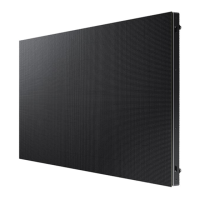


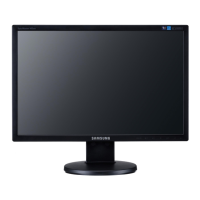
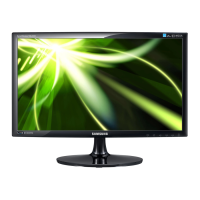
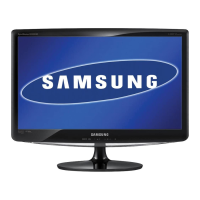


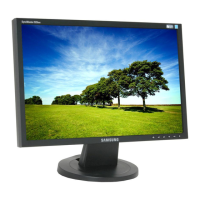
